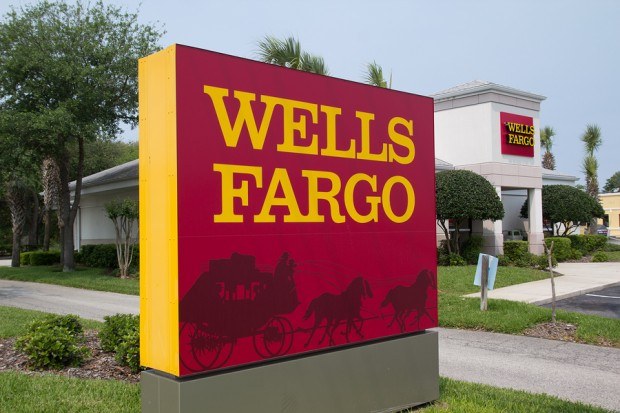Wells Fargo & Co.’s disclosure Thursday that employees may have opened significantly more unauthorized accounts than previously stated could jeopardize a $142 million class-action settlement with customers that won preliminary approval from a judge in July.
The scandal that helped hasten the lawsuit came to light almost a year ago, after regulators slapped Wells Fargo with fines of $185 million over its sales practices. Afterward, lawmakers called congressional hearings, and the bank named new leaders, clawed back executives’ pay and began an overhaul of its retail division. Wells Fargo’s stock lagged, and it lost its title as the world’s most valuable bank.
The settlement agreement seemed to indicate a point of resolution for the San Francisco-based lender, after it admitted its bankers may have created millions of fraudulent accounts. Yet with the bank’s higher estimate for such accounts — a new tally this week found an additional 1.4 million, 67 percent more than before — the calculus may have changed.
When a San Francisco federal judge gave preliminary approval to the settlement, it included the caveat that “further scrutiny will still be required” to consider the “breadth and depth” of the pact. From the perspective of affected customers, the bank has changed its story and been linked to too many more scandals in the past year for its latest contention about the depth of the scam to be trusted, said Steven Christensen, a lawyer for some of the plaintiffs.
‘Real Numbers’
“Wells Fargo is not going to roll over and give up its real numbers, and their admission that they had more fake accounts all along just confirms that,” said Christensen, who represents about 70 bank customers in Utah. “Until a court compels Wells Fargo to turn it all over, we’ll never know what really happened.”
Attorneys are preparing written objections to the settlement, which they may file in the next 15 to 30 days, said Scott Wert, an attorney for five people in Texas.
The external review into more than 165 million deposit and credit-card accounts brought the total estimate of bogus ones to about 3.5 million, the bank said Thursday in a statement. The revised estimate covers January 2009 to September 2016, almost twice as long as the initial examination. When it fined the bank a year ago, the Consumer Financial Protection Bureau ordered Wells Fargo to identify all customers affected by its sales misconduct.
The new review doesn’t go back as far as 2002, the year executives first knew about the wrongdoing and fired employees over it, according to investigators hired by the company’s board. That leaves customers who might’ve been harmed before 2009 uncounted and not included in the bank’s $10.7 million remediation efforts.
Chief Executive Officer Tim Sloan told reporters on a conference call Thursday that customers who may have had accounts taken out in their names before 2009 are covered by the class-action settlement. “The issue of going back further is really mitigated by the fact that the Jabbari settlement goes back to 2002,” Sloan said, referring to the lawsuit by its case name.
Sloan said the quality of the bank’s data before 2009 prevents it from examining earlier periods. “The challenge that we all have is that the farther you go back in time, the quality of the data tends to decline a bit,” he told reporters. He said Wells Fargo began its evaluation period in 2009 because that’s when it merged with Wachovia Corp.
Sloan said as part of the settlement, the bank will reach out to affected customers, plus others. “We think we’ve covered the landscape,” he said.
Yet the seven years’ discrepancy raises questions for plaintiffs’ attorneys about what a detailed investigation into bank records might divulge in those earlier years. Wells Fargo expanded its review after Washington lawmakers lambasted the company following former CEO John Stumpf’s testimony last September about the sales practices.
Even so, the attorneys representing customers of Wells Fargo aren’t all on the same page. Lawyers at Keller Rohrback LLP, who sued the bank even before its September admission, urged the judge in April to approve the settlement, saying the bank had divulged enough information to support it.
Keller Rohrback and one of its attorneys on the case, Derek Loeser, didn’t respond to calls and emails seeking comment after the bank’s announcement Thursday.
With plaintiffs divided on the way forward, the settlement could still win final approval when U.S. District Judge Vince Chhabria considers the matter on Jan. 4. The question before him could be over how many of the account holders plan to opt out of the settlement and pursue separate litigation.
If it’s approved, the class-action settlement would cover reimbursement of wrongly charged fees, credit-damage relief and cash compensation. Plaintiffs’ attorneys have capped their fees at 15 percent of the deal value — as much as $21 million of the $142 million settlement total.
The case is Jabbari v. Wells Fargo & Co., 15-cv-02159, U.S. District Court, Northern District of California (San Francisco).





















 Artificial Intelligence Is Rewriting the Rules for Commercial Lines
Artificial Intelligence Is Rewriting the Rules for Commercial Lines  Why ‘Good Enough’ Is Killing Insurance: The Hidden Cost of Satisficing
Why ‘Good Enough’ Is Killing Insurance: The Hidden Cost of Satisficing  Good Times for U.S. P/C Insurers May Not Last; Auto Challenges Ahead
Good Times for U.S. P/C Insurers May Not Last; Auto Challenges Ahead  Northern California Flooding This Weekend Caused by Heavy Rain, High Tides
Northern California Flooding This Weekend Caused by Heavy Rain, High Tides 


